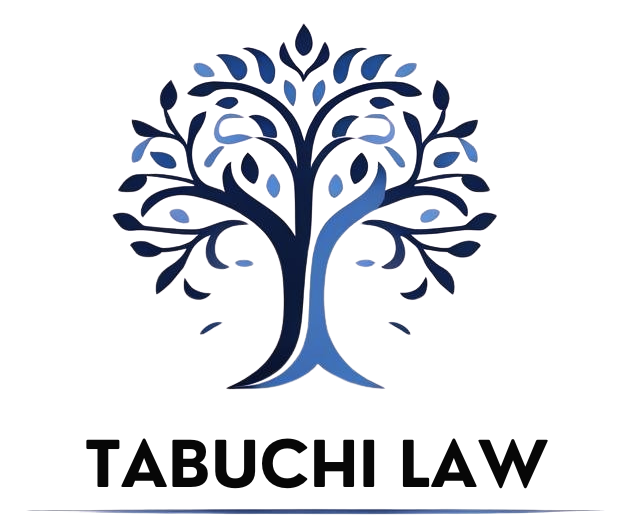Discover how a Henson Trust helps protect loved ones—start today!

The article provides a comprehensive guide on Henson Trusts and their impact on ODSP eligibility for disabled, handicapped, or minor beneficiaries in Ontario.It explains the key features of Henson Trusts and how they can be utilized as part of an effective estate planning strategy to protect the financial well-being of disabled, handicapped, or minor dependants while preserving their access to crucial government support programs.
Key Takeaways
- Henson Trusts are a type of discretionary trust that can help disabled individuals in Ontario maintain their eligibility for the Ontario Disability Support Program (ODSP) while still benefitting from an inheritance or other financial assets.
- Henson Trusts are designed to protect the assets of disabled, handicapped, or minor beneficiaries, ensuring that they do not disqualify them from receiving ODSP benefits.
- Proper estate planning, including the establishment of a Henson Trust, is crucial for families with disabled, handicapped, or minor dependants to ensure their continued financial security and access to government support programs.
Navigating Henson Trusts and ODSP Eligibility for Disabled Beneficiaries in Ontario: A Comprehensive Guide
Exploring the intricate relationship between Henson Trusts and ODSP (Ontario Disability Support Program) eligibility, this comprehensive guide provides essential insights for Ontario families with disabled loved ones. Uncover the nuances of estate planning, trust structures, and government benefits to ensure your disabled beneficiary's future is secured.
- What is a Henson Trust?
- How Does a Henson Trust Work?
- Benefits of a Henson Trust
- Henson Trusts and ODSP Eligibility
- Establishing a Henson Trust
- Considerations for Disabled Beneficiaries
- FAQs
What is a Henson Trust?
A Henson Trust, named after the landmark Henson v. Estate of Henson case, is a specialized type of trust designed to provide for the long-term care and well-being of a disabled beneficiary without jeopardizing their eligibility for government assistance programs, such as the Ontario Disability Support Program (ODSP). This trust structure allows the disabled individual to maintain their ODSP benefits while still receiving additional financial support from the trust.
How Does a Henson Trust Work?
The key to a Henson Trust's effectiveness is its irrevocable and discretionary nature. The trust is set up by the testator (the person creating the trust) and managed by a trustee, who has complete discretion over how the trust assets are distributed to the disabled beneficiary. The beneficiary does not have any direct control or access to the trust funds, which ensures that the assets are not considered their own for the purposes of ODSP eligibility. The trustee's sole focus is to use the trust assets to supplement the beneficiary's basic needs and enhance their quality of life, without replacing or reducing their government benefits.
Benefits of a Henson Trust
The primary benefit of a Henson Trust is that it allows a disabled individual to maintain their ODSP eligibility and continue receiving crucial government benefits, while also having access to additional financial resources from the trust. This can greatly improve the disabled beneficiary's quality of life and provide for their long-term care and support. Other key benefits include:
- Preserving the disabled beneficiary's government assistance, such as ODSP, which provides a steady income and access to essential services
- Supplementing the beneficiary's basic needs with additional funds from the trust, without affecting their government benefits
- Ensuring the trust assets are used solely for the benefit of the disabled individual, as the trustee has full discretion over distributions
- Protecting the trust assets from creditors or other claims, as the beneficiary has no direct control over the funds
- Providing long-term financial security and peace of mind for the disabled individual and their family
Henson Trusts and ODSP Eligibility
The key to maintaining ODSP eligibility while benefiting from a Henson Trust is the trust's irrevocable and discretionary nature. Because the disabled beneficiary has no direct control or access to the trust assets, the government does not consider these funds as the beneficiary's own, and they are therefore not counted towards their ODSP asset limit. This allows the disabled individual to continue receiving their ODSP benefits, which provide a critical safety net, while also having the additional financial support from the Henson Trust.
It's important to note that the trustee's role is crucial in ensuring the trust is administered correctly and the beneficiary's ODSP eligibility is preserved. The trustee must exercise their full discretion over the trust assets, using them solely for the benefit of the disabled individual and not providing any direct payments or access to the beneficiary.
Establishing a Henson Trust
Establishing a Henson Trust typically involves the following steps:
- Identifying the Disabled Beneficiary: The first step is to clearly identify the disabled individual who will be the beneficiary of the trust. This could be a child, grandchild, or other close relative with a physical or mental disability.
- Choosing a Trustee: The next step is to select a trustee who will be responsible for managing and distributing the trust assets. This person should be someone you trust to act in the best interests of the disabled beneficiary, with a strong understanding of ODSP rules and regulations.
- Funding the Trust: The trust will need to be funded, either through a lifetime gift or as part of the testator's estate plan. The amount of funding will depend on the disabled beneficiary's needs and the expected length of their care.
- Drafting the Trust Agreement: A qualified estate planning lawyer will draft the trust agreement, which outlines the terms and conditions of the Henson Trust, including the trustee's powers and responsibilities, as well as the guidelines for distributing the trust assets.
- Registering the Trust: Once the trust agreement is in place, the Henson Trust will need to be registered with the appropriate government authorities to ensure it meets all legal requirements and is recognized for ODSP purposes.
Considerations for Disabled Beneficiaries
When establishing a Henson Trust for a disabled beneficiary, there are several important factors to consider:
- Ongoing Eligibility: The trustee must be diligent in ensuring the trust is administered in a way that preserves the beneficiary's ODSP eligibility. This may involve regular communication with the ODSP office and careful monitoring of any changes to the beneficiary's financial situation or government assistance programs.
- Beneficiary's Needs: The trust must be tailored to the specific needs and circumstances of the disabled beneficiary. This may include provisions for medical expenses, specialized equipment, caregiver support, and other quality-of-life enhancements that go beyond the basic ODSP benefits.
- Trustee Selection: Choosing the right trustee is crucial, as they will be responsible for making decisions that directly impact the disabled beneficiary's well-being. The trustee should have a deep understanding of the beneficiary's needs, as well as the legal and financial complexities of administering a Henson Trust.
- Flexibility and Adaptability: As the disabled beneficiary's needs may change over time, the Henson Trust should be designed with enough flexibility to adapt to those changes. This may involve periodic reviews and updates to the trust agreement to ensure it continues to meet the beneficiary's evolving requirements.
FAQs
What is the difference between a Henson Trust and a regular trust?
The key difference is that a Henson Trust is specifically designed to preserve the disabled beneficiary's eligibility for government assistance programs, such as ODSP, while a regular trust does not have this specialized structure. Henson Trusts are irrevocable and discretionary, meaning the beneficiary has no direct control or access to the trust assets, which ensures they are not counted towards their ODSP eligibility.
Can a Henson Trust be used for a disabled minor or child?
Yes, Henson Trusts can be established for disabled minors or children, and they can be particularly beneficial in these cases. The trust can provide long-term financial security and support for the disabled child, while also ensuring their continued eligibility for ODSP and other government benefits as they transition into adulthood.
How is the Henson Trust funded?
Henson Trusts can be funded in a few different ways: through a lifetime gift, as part of the testator's estate plan (e.g., a will or life insurance policy), or through a combination of both. The amount of funding will depend on the disabled beneficiary's projected needs and the expected duration of the trust.
Can the disabled beneficiary access the Henson Trust funds directly?
No, the disabled beneficiary does not have direct access to the Henson Trust funds. The trustee has full discretion over how and when the trust assets are distributed, and they must use the funds solely for the benefit of the disabled individual. This ensures the beneficiary's ODSP eligibility is not affected.
What happens if the disabled beneficiary's circumstances change?
The Henson Trust should be designed with enough flexibility to adapt to changes in the disabled beneficiary's circumstances. This may involve periodic reviews and updates to the trust agreement, as well as open communication between the trustee and the ODSP office to ensure the trust continues to meet the beneficiary's evolving needs without jeopardizing their government benefits.



